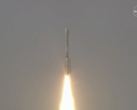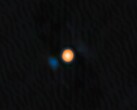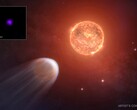For nearly four decades, a single data point from NASA’s Voyager 2 flyby has defined our understanding of Uranus as a cold, inactive world with no internal heat. That 1986 observation made the ice giant a major outlier compared to Jupiter, Saturn, and Neptune, which all radiate more heat than they receive from the Sun. Now, a new NASA-supported study corrects this long-standing assumption.
A team of scientists has used advanced computer modeling to re-examine decades of data, concluding that Uranus does in fact generate its own heat. The research, published in the Monthly Notices of the Royal Astronomical Society, found that the planet releases about 15% more energy than it receives from the Sun.
The previous conclusion hinged entirely on that one measurement from Voyager 2. “Everything hinges on that one data point,” said Amy Simon, a planetary scientist at NASA’s Goddard Space Flight Center. “That is part of the problem.”
The new research, led by Patrick Irwin of the University of Oxford, developed a computer model that integrated everything known about the planet's atmosphere from years of telescope observations. This model accounted for Uranus's clouds, hazes, and seasons, leading to a different conclusion. “We realized that it is actually more reflective than people had estimated,” Irwin said. This meant less of the Sun’s energy was being absorbed, and the planet’s own internal heat was a bigger factor in its energy budget than previously thought.
Understanding a planet’s internal heat is crucial for mapping its formation and age. This corrected view of Uranus will not only help scientists better understand the history of our own solar system, but also aid in the study of the many similarly-sized exoplanets found throughout the galaxy.
For those interested in spotting Uranus and other distant planets, the Celestron NexStar 8 SE (curr. $1,749 on Amazon) is a powerful option. Its 203 mm (8-inch) aperture gathers ample light to reveal Uranus as a distinct blue-green disc — far clearer than the star-like dot seen through smaller telescopes. Under dark skies and with higher magnification, observers may even glimpse one or two of the planet’s largest moons.
Fun fact: The Voyager 2 was launched on August 20, 1977, but only managed the Uranus Flyby on January 24, 1986. Before that it flew by Jupiter (July 9, 1979) and Saturn (August 25, 1981), and Neptune after (August 25, 1989).






















